Last summer when I was in Cádiz I spent hours searching on the beach for the Lucky Beans (Little Sea Ears) that I always caught as a child with my grandmother. I knew it was difficult, but if I found one I would make a pendant for luck during the year and to remember her. I only found a few broken pieces that were difficult to set.

At the return of summer, a person ordered me two pendants with some shells that he had caught on the beach. When she showed them to me I saw that they were lucky beans or sea ears , as she called them. I set two of them and she gave me another one to make a pendant for myself.
I took a photo of those pendants and published it and that post has been the one that has had the greatest impact of all the ones I have made so far.

I realized that the ears were not only a symbol of childhood for me and my family, they also represented childhood for an entire invisible community that gathers every year on the beaches and fills It's exciting to find this little amulet that the sea brings us. A community that remains united to previous generations through the memory of those mothers and grandmothers who decided to share their time teaching us how to build a legacy of happy memories.
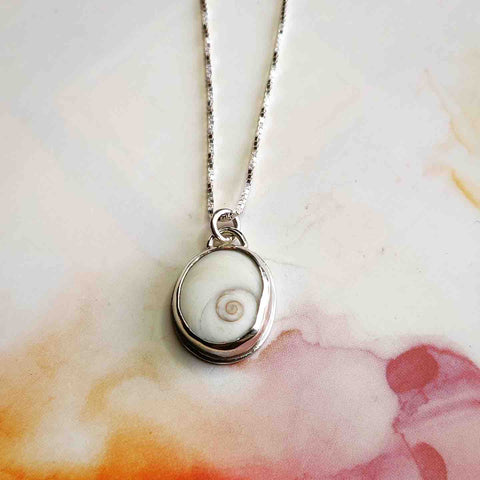
Memories of the Lucky Beans (Sea Ears)
I wanted to bring together in this text some of the memories that all those people have been sharing with me since then, moments of childhood, experiences and family stories and what name they are called by in each place. It is a way to show the powerful value that these small shells have.
"You know, my grandmother had a lot, and despite searching, I never found any. Now it's been a year since she passed away, and this summer I have found many. Even on December 24th, walking on the beach with my two children I said out loud “I hope grandma makes her presence felt today” and a second later, a wave brought me a… ❤️.”
“It transports me to my beach days as a child, with my parents and brothers, childhood memories and days of sun and summer. It was a treasure and in fact my mother and I have some earrings set in gold, although only one of each remains, in different sizes 😂.The others were lost😂Thank you for sharing it ❤️❤️.”
“My mother has some earrings made, my father found them on his honeymoon trip.”
“Migraine stones, we used to catch them in Cala Panizo and my grandmother said that whoever carried them took away their headaches and I remember beautiful moments when we went to look for those stones❤️”
“I love... I call them Ninetas, my aunt Merche taught me how to catch them. I caught them in Menorca and I in Ibiza, I have a little bottle from every summer that my girls and I used to play fetch. This summer I found two in Benicasim. I have a ring that my husband gave me from an artisan from Ibiza with a large one that is my summer must-have. Summer doesn't start until I put on my Nineta.”
“I found some games, but a friend gave me one years ago that he found on a beach in Tunisia. Shortly after he died. Icrimped the ear and when I don't wear it I keep it in a little box full of dried roses. This way it is always in my memory.”
“These stones were used to clean the eye, it gets between the eyelid, they did it to me when I was little ☺️”
“Here in Almería they are called Jaquecas, and I used to collect them with my grandmother walking along the beach, now there isn't a single one left 😢, although I still have many saved.”
“It was said that it helped relieve headaches if you placed it on your forehead.”
“I have managed to find the small ones of a few millimeters. I call those little treasures because they are very difficult to see.”
“Ears of all lifea, I love them and it is a tradition to have them on pendants in my family.”
“I am from Conil, town of Cádiz. I was very excited to see your pendants... Every time I step on the beach I look for them, sometimes with luck and sometimes not... Here they are known as little...lucky ears😍”
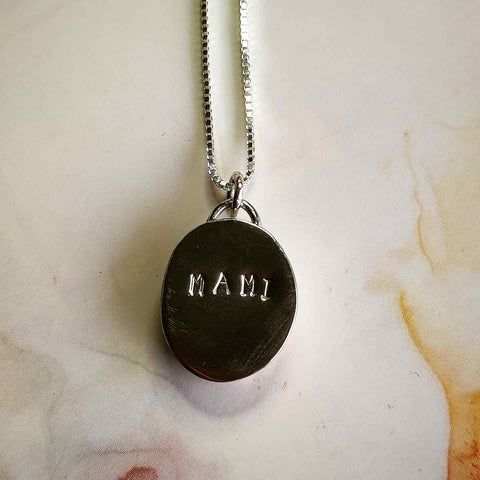
Names of the Lucky Beans (Sea Ears)
Here you also have all the names that I have managed to compile and by which these shells are known:
- Lucky beans (name my grandmother called them)
- Bolma rugosa (scientific name)
- Little ears of the sea (Cádiz)
- Lucky little ears
- Opercula
- Stones of Santa Lucía (Mallorca)
- Ears of God
- Ollos de Mar (Galicia)
- Goat eye
- Eye of Shiva (Canary Islands)
- Habita de India (Rota)
- vital eye
- Cat eye (New Zealand)
- Sea shells
- Headache
- Jaquequeros (Almería)
- Ninetas (Menorca)
- Caracolas from Cala Conta (Ibiza)
- Llabrizas and Orellóns (Galicia)
- Headache rock (Dénia)
- Little bellies
- Elephant ear
- Bull's eye
- Eyes of Venus - Eyes of Venus (Valencia)
- Ollo Mao (Galicia)
- Dried peaches
Sea ears in our jewelry
At Sophie's in Jupiter we have designed several different pieces using Sea Ears.
The Lucky Bean (Sea Ear) Pendant consists of a hand-set sea ear that can be personalized with a small engraving on the back.
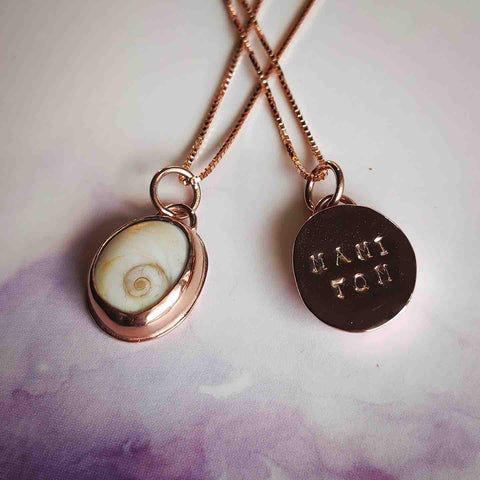
The Sea Ear Pendant (Lucky Bean) , also handmade , is a simpler and more economical version of the Habita de la Suerte pendant .

The Nacre and Sea Ears Marine Pendant is another pendant handcrafted with sea ears (lucky beans) and hexagonal mother-of-pearl shells.
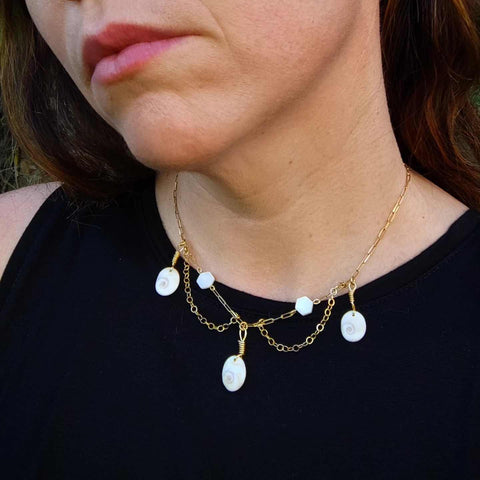
Another similar pendant, Larger in size and considered a lucky charm is the Eye of Saint Lucia Pendant made with an Eye of Saint Lucia shell stone.
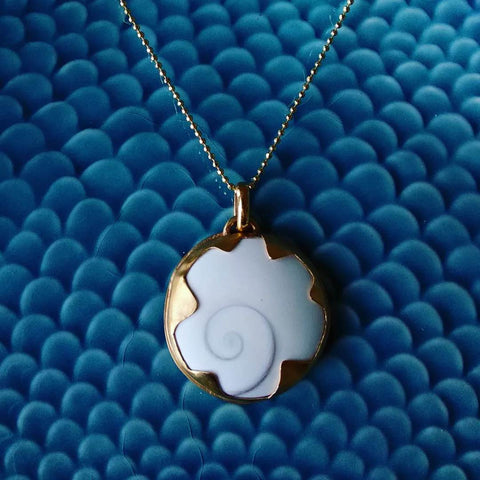
In all cases, the pendant is delivered along with a chain of 40 or 45 centimeters and a card telling the meaning of this magical shell.

